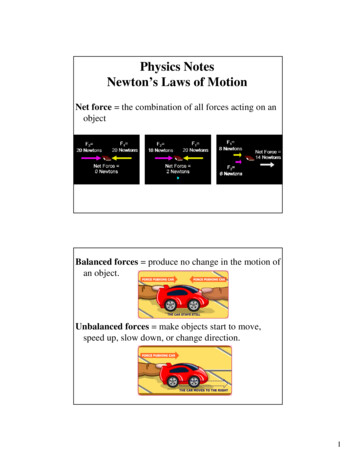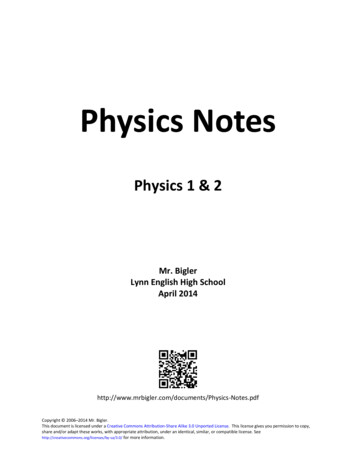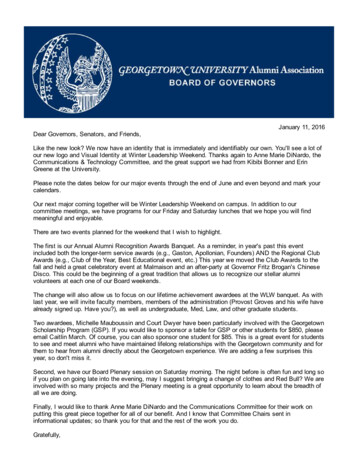
Transcription
Physics NotesNewton’s Laws of MotionNet force the combination of all forces acting on anobjectBalanced forces produce no change in the motion ofan object.Unbalanced forces make objects start to move,speed up, slow down, or change direction.1
In 1687, Isaac Newton publishedPhilosophiae NaturalisPrincipia Mathematica.In this book he explained therelationship between force andmotion.His three laws of motion can beused to explain the movementof all objects in the universe.Newton’s First Law of Motion An object at rest will stay at rest unless acted on byan unbalanced force. An object in motion will stayin motion at the same speed and in the samedirection unless acted on by an unbalanced force.2
Inertia an object’s tendency to resist a change inmotion.All objects have inertia.The greater the object’s mass, the greater its inertiaand the larger the force needed to overcome inertia.Newton’s Second Law of Motion The acceleration of an object by a force is inverselyproportional to the mass of the object and directlyproportional to the force.Force (N) mass (kg) x acceleration (m/s2)F ma3
a F/mF 0.49 Nm 0.05 kgF 68.6 NFind theacceleration ofthe marble.m 7.0 kgFind theacceleration ofthe bowling ball.Air resistance and falling objectsThe force of gravity if pullingdown on the feather and coin.The force of air resistance ispushing up on the feather andcoin.The net force of the feather andcoin is equal to the force of airresistance subtracted from theforce of gravity.Air resistanceGravity4
Falling objects don’t accelerate through their wholefall. Eventually, the force of air resistance pushingup against the object equals the force of gravitypulling down on the object.When that happens, the net force on the falling objectbecomes zero, and so the object stops accelerating.The final speed is called terminal speed.*example: raindrops reach terminal speed as they fall.Newton’s Third Law of Motion For every action, there is an equal and oppositereaction.5
Momentum depends on the object’s mass andvelocity.The more momentum an object has, the harder it is tostop the object or change its direction.Momentum mass x velocityp mxvKilogram-meters per second, kg·m/s (momentum)Kilograms, kg (mass)Meters per second, m/s (velocity)Law of Conservation of MomentumStates that any time objects collide, the total amountof momentum stays the same.6
Physics Notes Newton's Laws of Motion Net force the combination of all forces acting on an object Balanced forces produce no change in the motion of an object. Unbalanced forces make objects start to move, speed up, slow down, or change direction. 2 In 1687, Isaac Newton published










